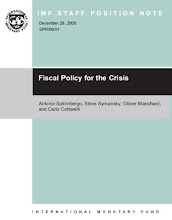Though India’s stock markets have been underperforming in recent months but, the Sensex as well as the Nifty has given more than 40% annualized returns in the past five years to 2007. Similarly, since 1998, net foreign investment into India has quadrupled. Gauging by the above parameters, the country continues to be one of the most attractive markets in the world. To give global investors better and comprehensive information to make investments decision in India, global rating major Standard & Poor has launched S&P India Select Index. The index will give global investor with tradable exposure information and exposure to the largest and most liquid companies listed on the National Stock Exchange (NSE).
The index includes 60 major Indian companies that meet its parameters which includes size, liquidity and tradability requirements. Also, there is no single stock representing a weight of more than 10% in the index. On a whole the index is float-adjusted and stock weights are determined by what is legally and practically available to foreign investors.
Telecommunications, consumer staples, utilities, financials, energy, materials, industrials, information technology and healthcare are among the sectors included in the index. The top ten holdings by percentage of index weight are Infosys, Bharti Airtel, ONGC, Reliance Communications, HDFC, RIL, ICICI Bank, HUL, BHEL, and L&T. For inclusion in the index, the companies must already be a constituent of the S&P/IFCI India Index with a float-adjusted market capitalization above $500 mn at each annual rebalancing and a six-month average daily trading value above $1 mn. The index uses an evolutionary algorithm-driven optimization to maximize index basket liquidity at each rebalancing which occurs annually in January.
The index includes 60 major Indian companies that meet its parameters which includes size, liquidity and tradability requirements. Also, there is no single stock representing a weight of more than 10% in the index. On a whole the index is float-adjusted and stock weights are determined by what is legally and practically available to foreign investors.
Telecommunications, consumer staples, utilities, financials, energy, materials, industrials, information technology and healthcare are among the sectors included in the index. The top ten holdings by percentage of index weight are Infosys, Bharti Airtel, ONGC, Reliance Communications, HDFC, RIL, ICICI Bank, HUL, BHEL, and L&T. For inclusion in the index, the companies must already be a constituent of the S&P/IFCI India Index with a float-adjusted market capitalization above $500 mn at each annual rebalancing and a six-month average daily trading value above $1 mn. The index uses an evolutionary algorithm-driven optimization to maximize index basket liquidity at each rebalancing which occurs annually in January.
This is the third such move in the past one year by global financial companies to launch indices based on India, last August, Dow Jones had launched Dow Jones India Titans, a stock index tracking 30 most liquid stocks on the BSE and the NSE, while in February, finance firm Atherstone Capital Markets launched two indices dedicated to Indian primary markets.




